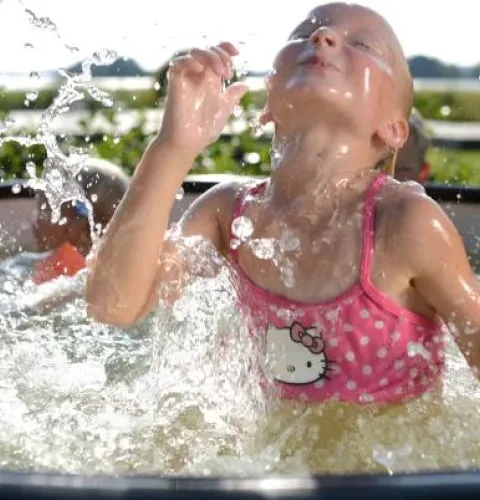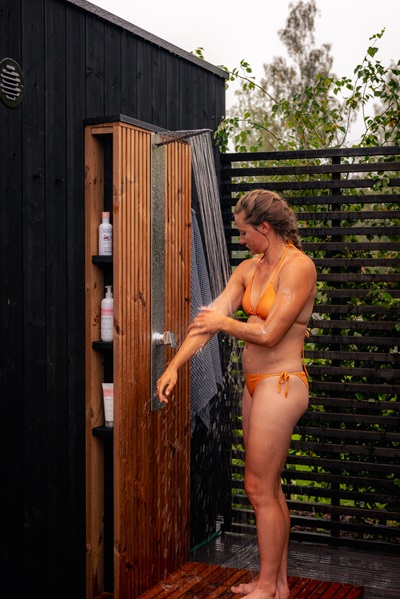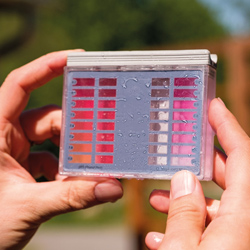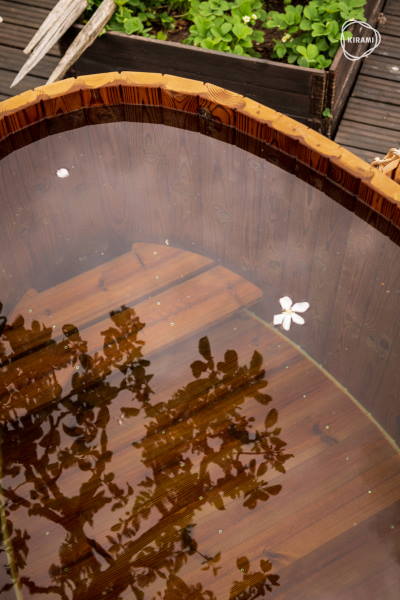Easy water hygiene with Kirami

Many of the questions we receive about our hot tubs are related to water hygiene. A lot of people seem to think that taking care of water hygiene is difficult. In reality, it’s quite easy to keep your bathwater clean, as long as you have good instructions. When you follow Kirami’s advice, your bathwater will stay clean.
Water cleanliness consist of two sectors
1. Maintaining the purity of the water with a filtration device.
2. Eliminating bacteria and micro-organisms with the help of
water treatment chemicals.
There are different methods for chemically cleaning hot tub
water, the suitability differs for these methods depending on
conditions and the user’s own needs.
Also remember your personal hygiene before going to the pool! 
It is important to take a shower and wash off the usual dirt before bathing. It is also important to wash off soap residue and skin cream and make sure the swimsuit is rinsed well.
A tip for using the tub at your cottage: bathe throughout the weekend with a single fill
The water maintenance required by a hot tub depends on where the tub is used. At a summer cottage, where bathwater is often carried from the sea, a river or a lake, the water may be changed for each bath. This way, you will always have clean water, although the constant filling and emptying of the tub takes some effort. When using sea and lake water, it is good to be especially careful about a water hygiene and we always recommend the use of chemicals. Well or tap water you can bath through the weekend without a filter, but chemicals are good to use.
If you wish to bathe in the same water for 1–3 times, for example for the entire weekend, you should use one of the following options.
For quick cleaning: Shock treatment destroys bacteria
For immediate disinfection effect use dissolving chlorine or active oxygen granules.
- Please note: Remember to mix the granules with a small amount of water before putting them into the tub.
Water from a tap or a well? How to keep your water clean throughout the summer
If you need to fill your tub with tap water or well water, it will be worth it to invest in thorough water hygiene. When the water is maintained properly, it will remain clean and pleasant for a long time, even throughout the summer. This type of water maintenance is not very complicated, either. Kirami recommends using a filter system and chemicals either with or without chlorine.
Filters and chemicals take care of water hygiene
Bathwater maintenance consists of two areas: mechanical sanitation with a filter and chemical cleansing with cleaning agents. A filter in the tub removes loose dirt from the water, and the cleaning chemicals mixed into the water remove bacteria and algae.
When purchasing the chemicals, you need to decide if you want to clean your tub with chlorine or active oxygen. Chlorine is a common cleaning agent used in places such as public swimming pools because of its powerful and long-lasting effect. However, not everyone wants to use chlorine due to sensitivity and allergies. In this case, cleaning your tub with active oxygen is a viable alternative. If there are multiple bathers or if the tub is in public use, we strongly recommend the option with chlorine
Check out our filters and filter accessories:

Fix your tub’s pH values
First, you need to ensure that the pH value of the bathwater is at a correct level so that the cleaning chemicals will work in the best possible manner and that heater won’t be corroded. Using pH test strips is the easiest way to check the pH value. A strip is dipped into the tub, after which you can compare the colour of the strip to the colours on the can. A more precise pH measurement can be made with a pH tester than can also be used to check the oxygen content and the amount of free chlorine in the water. The testing tablets are placed in the compartments of the tester, and water is scooped from the tub into the test box. As the tablets dissolve, they dye the water in the tester. The scale on the side of the tester shows which colour corresponds to which pH value. The ideal pH value is 7.0–7.4. If the pH value is under the ideal level, pH+ granules, in the amount specified in the instructions, are first added into the bathwater, taken from the tub, in a separate bucket. Once the granules have dissolved, the water in the bucket is poured back into the tub. If the pH value is too high, the same procedure is performed using the pH- granules.

In a nutshell: keeping your bathwater clean and pleasant only requires a few steps. First, you measure the condition of the water, and then you improve it with pH granules and cleaning tablets.
We wish you pleasant baths in clean and hygienic water!